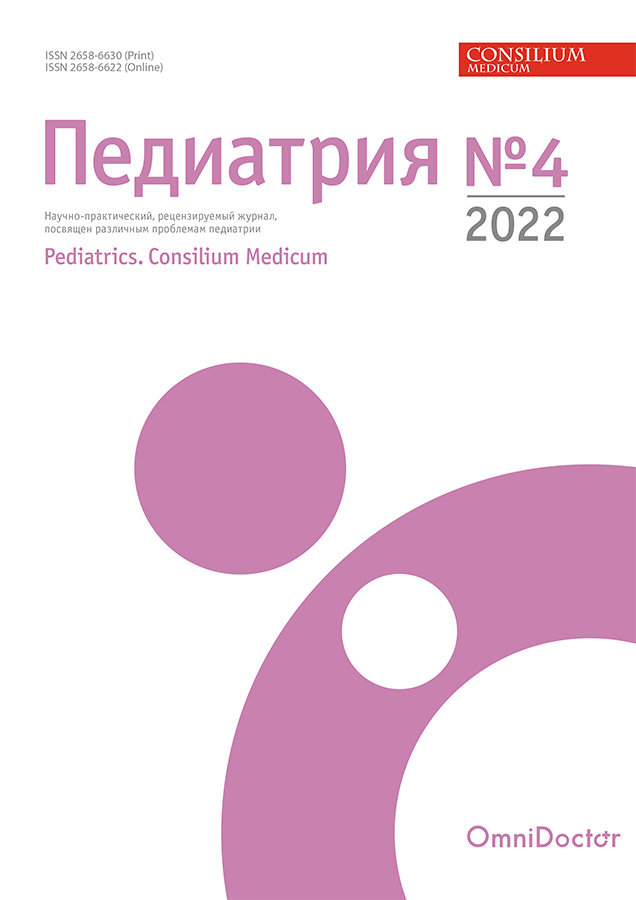Features of microcirculation changes in children with a burdened allergic history. Case Report
- 作者: Berezhanskiy P.B.1,2, Gutyrchik T.A.1,3, Malakhov A.B.1,3,4, Kovalenko I.V.1,5, Gutyrchik N.A.2,6, Dustbabaeva N.D.7
-
隶属关系:
- Morozov Children's City Clinical Hospital
- People’s Friendship University of Russia (RUDN University)
- Research Clinical Institute of Childhood
- Sechenov First Moscow State Medical University (Sechenov University)
- Podolsk Children's City Hospital
- Avtsyn Research Institute of Human Morphology of Petrovsky National Research Centre of Surgery
- Republican Scientific Specialized Allergological Center
- 期: 编号 4 (2022)
- 页面: 344-348
- 栏目: Articles
- URL: https://pediatria.orscience.ru/2658-6630/article/view/120161
- DOI: https://doi.org/10.26442/26586630.2022.4.202001
- ID: 120161
如何引用文章
全文:
详细
Microcirculatory changes play an important role in the pathogenesis of allergic diseases. The definition of microcirculation includes the movement of fluid between the circulatory and lymphatic networks through intracellular systems, the transmembrane exchange of substrates, gases, including metabolic products and signal molecules. Due to the complexity of the pathogenesis of microcirculatory changes, it is necessary to use sensitive methods for diagnosing the degree of capillary blood flow disorder and associated changes in the microvessels of the arteriolar and venular parts of the microvasculature. Today, there is an available non-invasive method for assessing microcirculation using capillaroscopy of the nail-fold, which allows assessing the structure of microvessels in real time in vivo. Evaluation of capillaries by nail-fold capillaroscopy is the safest method for children and does not cause them concern during the study. With the help of capillaroscopy of the nail-fold, it is possible to assess the quantitative parameters of microcirculation, the width and length of the capillaries, the diameter of the arterial and venous sections, the outer and inner diameters, the width of the apex and the distance between the capillaries. The speed of blood flow in the arterial and venous sections is also taken into account. It is important to note that capillaroscopy also assesses the presence of avascular zones, the appearance of which indicates tissue hypoxia, and therefore can be considered as an important prognostic factor. Capillaroscopy is of great diagnostic value, as it allows developing tactics for treating patients, and, most importantly, assessing the effectiveness of the therapy and predicting the outcome of the disease. The presented clinical observation convincingly demonstrates the need to assess microcirculation during nail-fold capillaroscopy in children with aggravated allergic anamnesis.
全文:
作者简介
Pavel Berezhanskiy
Morozov Children's City Clinical Hospital; People’s Friendship University of Russia (RUDN University)
编辑信件的主要联系方式.
Email: berezhanskiy-pv@rudn.ru
ORCID iD: 0000-0001-5235-5303
SPIN 代码: 1480-9900
Cand. Sci. (Med.), Morozov Children's City Clinical Hospital, People’s Friendship University of Russia (RUDN University)
俄罗斯联邦, Moscow; MoscowTatiana Gutyrchik
Morozov Children's City Clinical Hospital; Research Clinical Institute of Childhood
Email: tanya_2904@list.ru
ORCID iD: 0000-0002-8421-1694
SPIN 代码: 9592-5776
Graduate Student, Morozov Children's City Clinical Hospital, Research Clinical Institute of Childhood
俄罗斯联邦, Moscow; MoscowAlexander Malakhov
Morozov Children's City Clinical Hospital; Research Clinical Institute of Childhood; Sechenov First Moscow State Medical University (Sechenov University)
Email: alexis4591m@mail.ru
ORCID iD: 0000-0002-2686-8284
SPIN 代码: 1749-0503
D. Sci. (Med.), Prof., Sechenov First Moscow State Medical University (Sechenov University), Research Clinical Institute of Childhood, Morozov Children's City Clinical Hospital
俄罗斯联邦, Moscow; Moscow; MoscowIrina Kovalenko
Morozov Children's City Clinical Hospital; Podolsk Children's City Hospital
Email: berezhanskiy-pv@rudn.ru
ORCID iD: 0000-0003-1359-2263
SPIN 代码: 8769-8911
Pulmonologist, Morozov Children's City Clinical Hospital, Podolsk Children's City Hospital
俄罗斯联邦, Moscow; PodolskNikita Gutyrchik
People’s Friendship University of Russia (RUDN University); Avtsyn Research Institute of Human Morphology of Petrovsky National Research Centre of Surgery
Email: gyt94@yandex.ru
ORCID iD: 0000-0002-2352-278X
SPIN 代码: 4827-5067
Assistant, People’s Friendship University of Russia (RUDN University), Avtsyn Research Institute of Human Morphology of Petrovsky National Research Centre of Surgery
俄罗斯联邦, Moscow; MoscowNazifa Dustbabaeva
Republican Scientific Specialized Allergological Center
Email: nazifa.d@bk.ru
ORCID iD: 0000-0001-6987-7749
Head of Scientific Laboratory, Republican Scientific Specialized Allergological Center
俄罗斯联邦, Tashkent参考
- Mallol J, Crane J, von Mutius E, et al. The International Study of Asthma and Allergies in Childhood (ISAAC) Phase Three: a global synthesis. Allergol Immunopathol. 2013;41(2):73-85.
- Клинические рекомендации. Бронхиальная астма (год утверждения: 2021). Режим доступа: https://cr.minzdrav.gov.ru/recomend/359_2. Ссылка активна на 15.07.2022 [Clinical guidelines. Bronchial asthma (year of approval: 2021). Available at: https://cr.minzdrav.gov.ru/recomend/359_2. Accessed: 15.07.2022 (in Russian)].
- Ганузин В.М., Черная Н.Л., Маскова Г.С. Особенности врачебной профессиональной консультации подростков с бронхиальной астмой: клинические наблюдения. Доктор.Ру. 2020;19(3):57-60 [Ganuzin VM, Chernaya NL, Maskova GS. Features of Specialised Medical Consultation of Adolescents with Bronchial Asthma: Clinical Observation. Doctor.Ru. 2020;19(3):57-60 (in Russian)].
- Чернух А.М., Александров П.А., Алексеев О.В. Микроциркуляция. М.: Медицина, 1984 [Chernukh AM, Aleksandrov PA, Alekseev OV. Mikrotsirkuliatsia. Moscow: Meditsina, 1984 (in Russian)].
- Kasperska-Zajac A, Brzoza Z, Rogala B. Platelet activating factor as a mediator and therapeutic approach in bronchial asthma. Inflammation. 2008;31(2):112-20.
- Wanner A, Mendes ES. Airway endothelial dysfunction in asthma and chronic obstructive pulmonary disease: a challenge for future research. Am J Respir Crit Care Med. 2010;182(11):1344-51.
- Hafkamp-de Groen E, Lingsma HF, Caudri D, et al. Predicting asthma in preschool children with asthma-like symptoms: validating and updating the PIAMA risk score. J Allergy Clin Immunol. 2013;132(6):1303-10.
- Бережанский П.В., Гутырчик Т.А., Малахов А.Б., и др. Изменение микроциркуляторного русла при проведении капилляроскопии у детей в зависимости от отягощенного аллергоанамнеза. Современные проблемы науки и образования. 2022;3 [Berezhansky PV, Gutyrchik TA, Malakhov AB, et al. Changes in the microcirculatory bed during capillaroscopy in children depending on the aggravated allergic anamnesis. Modern problems of science and education. 2022;3 (in Russian)]. doi: 10.17513/spno.31713
- Braverman IM. The cutaneous microcirculation. J Investig Dermatol Symp Proc. 2000;5(1):3-9.
- Barnes PJ. The cytokine network in asthma and chronic obstructive pulmonary disease. J Clin Invest. 2008;118 (11):3546-56.
补充文件















